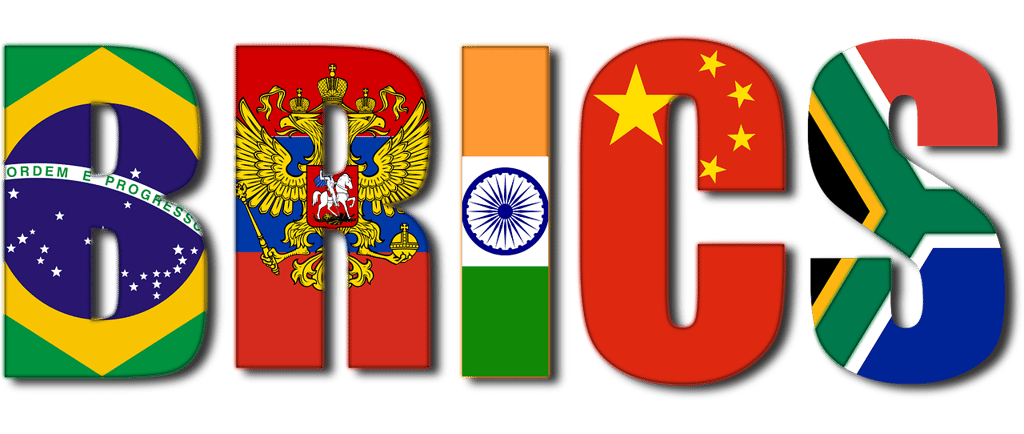BRICS Unites Against Trump’s Tariff Tactics: A New Era of Resistance
Blog post description.
NEWS
8/9/20253 min read


The BRICS nations—Brazil, Russia, India, China, and South Africa—are banding together to counter U.S. President Donald Trump’s aggressive tariff policies, which have sparked a global trade crisis. With tariffs as high as 50% on Brazil and India, and 30% on South Africa, the BRICS bloc is forging a united front to protect their economies. This blog post explores the latest developments, diplomatic responses, and the potential for a multipolar world order as BRICS nations resist U.S. economic pressure. Stay tuned for insights into this escalating geopolitical showdown!
Keywords: BRICS nations, Trump tariffs, global trade 2025, US trade policy, multipolar world
Trump’s Tariff Onslaught Targets BRICS
On August 9, 2025, WION reported that Trump’s latest tariffs have hit BRICS nations hard, with Brazil and India facing 50% tariffs on exports to the U.S., and South Africa facing 30%. India’s penalties are tied to its oil trade with Russia, while Brazil and South Africa are targeted for perceived trade imbalances. These measures have triggered a diplomatic chain reaction, with Russian President Vladimir Putin leading efforts to rally BRICS leaders, including India’s Prime Minister Narendra Modi, China’s Xi Jinping, and South Africa’s Cyril Ramaphosa, to counter U.S. trade aggression.
The tariffs are seen as a strategic move to pressure BRICS nations into aligning with U.S. interests, but they’re having the opposite effect—pushing these countries closer together. This development signals a shift toward a multipolar world, challenging the U.S.-led global economic order.
Keywords: Trump tariffs BRICS, US trade war, Brazil tariffs, India Russia oil trade
Diplomatic Pushback: BRICS Leaders Respond
In response to Trump’s tariffs, Putin held talks with Modi, Xi, and Ramaphosa, focusing on both the tariffs and the Ukraine-Russia conflict. According to the WION video, Modi reiterated India’s call for a peaceful resolution to the Ukraine war while inviting Putin for the 23rd India-Russia Summit. Brazil’s President Lula da Silva emphasized equal treatment in trade talks with the U.S., signaling Brazil’s refusal to compromise sovereignty. China, meanwhile, slammed the tariffs on India as “tariff abuse,” urging restraint.
These discussions highlight a coordinated BRICS strategy to resist U.S. economic coercion. The bloc is exploring ways to insulate their economies, from alternative trade routes to enhanced cooperation in energy and defense. This unity could redefine global trade dynamics in 2025 and beyond.
Keywords: BRICS diplomacy, Putin Modi talks, US trade aggression, global trade resistance
Expert Insights: A Unified BRICS Front
Experts interviewed by WION emphasized the challenges and opportunities for BRICS. One analyst noted that the U.S. favors bilateral agreements, making it difficult for BRICS to negotiate as a bloc. However, Brazil’s Lula is pushing for a concerted effort, balancing dialogue with the U.S. and stronger BRICS collaboration. Another expert highlighted the geopolitical motivations behind the tariffs, particularly India’s and China’s ties with Russia, which the U.S. views as a threat.
The tariffs are uniting BRICS nations despite internal rivalries, such as India-China border disputes. This “push” factor, as one expert described, is driving Brazil, India, and China to align against a common adversary, potentially reshaping global alliances.
Keywords: BRICS unity, US tariffs geopolitics, Brazil trade talks, multipolar world order
Economic and Geopolitical Implications
Trump’s tariffs are not just economic—they’re a geopolitical power play. The WION report suggests that these measures risk alienating BRICS nations, which collectively represent 26% of global GDP, rivaling the U.S. economy. By targeting BRICS, Trump may be accelerating the shift toward a multipolar world, where nations like China and India wield greater influence.
The tariffs also threaten global supply chains, particularly for Brazil’s agricultural exports and India’s tech and oil sectors. South Africa, already grappling with a 30% tariff, faces economic strain that could push it closer to BRICS allies. This could lead to new trade corridors, with China funding infrastructure and India opening markets.
Keywords: BRICS global GDP, Trump tariffs impact, multipolar world 2025, global supply chains
What’s Next for BRICS and Global Trade?
Looking ahead, BRICS nations are preparing for a critical meeting before Putin’s talks with Trump in Alaska. The bloc is exploring:
Alternative Trade Systems: Reducing reliance on U.S.-dominated financial systems.
Strengthened Bilateral Ties: India-Russia and Brazil-China partnerships to counter tariffs.
Global South Leadership: Positioning BRICS as a voice for developing nations against Western economic dominance.
As the U.S. delegation plans to discuss trade issues in late August, BRICS nations are poised to negotiate from a position of strength, balancing their “red lines” with strategic concessions. The outcome could redefine global trade and power dynamics in 2025.
Keywords: BRICS trade systems, global south leadership, US trade talks 2025
Conclusion
Trump’s tariff tactics have ignited a new era of resistance among BRICS nations, uniting them against U.S. economic coercion. As Brazil, India, China, and South Africa strengthen their alliances, the world may be witnessing the dawn of a multipolar order. This geopolitical shift, driven by trade wars and diplomacy, will shape global economics for years to come. Stay updated on this evolving story, and share your thoughts in the comments below!
Keywords: BRICS resistance, Trump trade war, multipolar world order, global trade news
